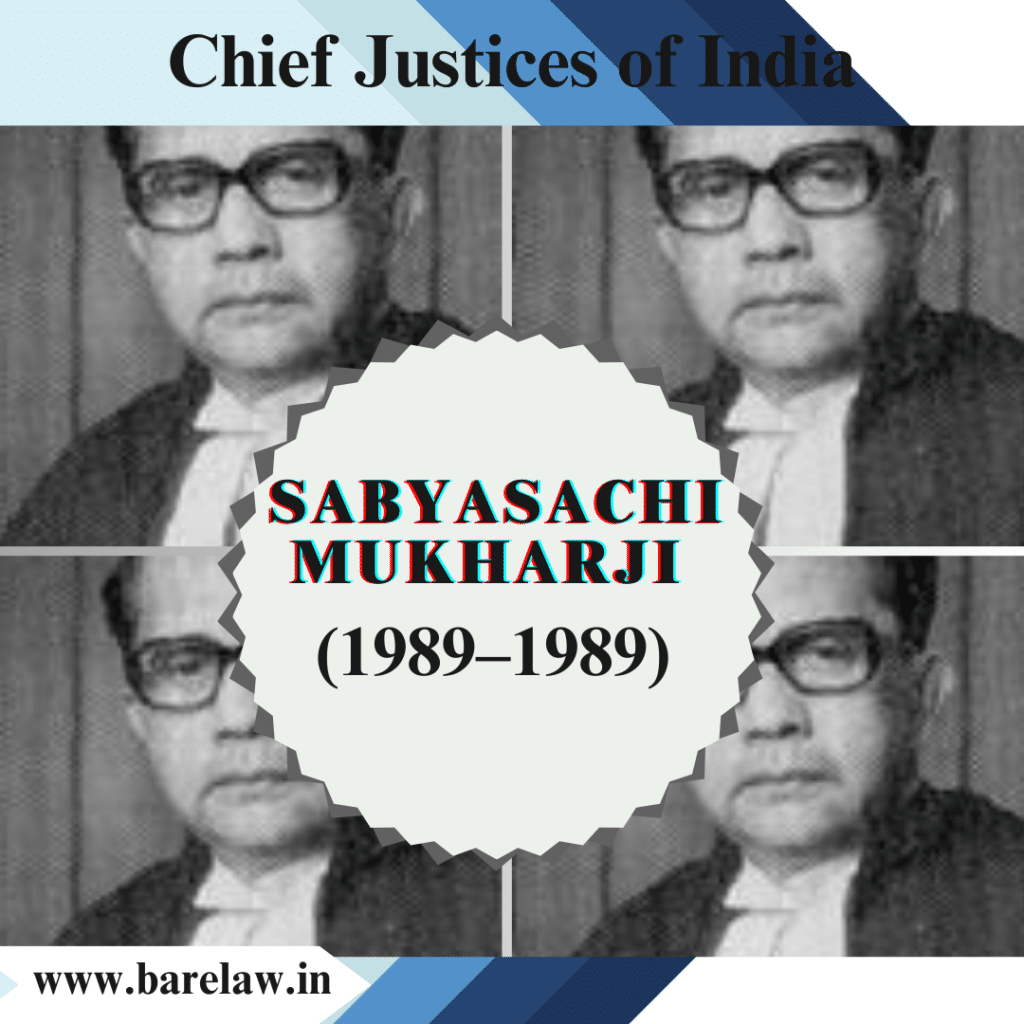
Table of Contents
Sabyasachi Mukharji: Chief Justice of India (1989–1990)
Sabyasachi Mukharji: Chief Justice of India (1989–1990)
Introduction
Sabyasachi Mukharji, a prominent figure in the Indian judiciary, served as the Chief Justice of India from 1989 to 1990. His tenure witnessed significant legal developments and reforms that left a lasting impact on the country’s jurisprudence. In this comprehensive article, we will explore the life, career, and contributions of Sabyasachi Mukharji during his tenure as the Chief Justice of India.
Section 1: Early Life and Education
Sabyasachi Mukharji was born on January 23, 1929, in Calcutta (now Kolkata), India. His early education was rooted in Kolkata, where he attended prestigious institutions, including St. Xavier’s College. He pursued his legal education at the University of Calcutta, where he earned a Bachelor of Laws degree. Mukharji’s formative years were marked by academic excellence and a deep passion for law.
Section 2: Legal Career
2.1. Advocate and Senior Advocate
After completing his legal education, Mukharji began his legal career as an advocate. He rapidly gained recognition for his legal acumen and dedication to the profession. His commitment to justice earned him the title of Senior Advocate, a prestigious distinction bestowed upon distinguished lawyers in India.
2.2. Judicial Appointments
Sabyasachi Mukharji’s journey in the judiciary commenced with his appointment as a judge of the Calcutta High Court in 1975. He served as a judge of the High Court with distinction and contributed significantly to the development of legal jurisprudence in West Bengal.
2.3. Elevation to the Supreme Court
Mukharji’s career reached new heights when he was appointed as a judge of the Supreme Court of India in 1983. His elevation to the highest court in the land marked the beginning of an illustrious tenure that culminated in his appointment as the Chief Justice of India.
Section 3: Tenure as Chief Justice of India (1989–1990)
3.1. Historical Context
Sabyasachi Mukharji assumed the office of the Chief Justice of India at a crucial juncture in the country’s legal history. His tenure coincided with significant legal and constitutional developments.
3.2. Key Initiatives and Reforms
During his tenure, Chief Justice Mukharji presided over several noteworthy initiatives and reforms that left an indelible mark on India’s legal landscape. These included:
- Judicial Accountability: Chief Justice Mukharji championed the cause of judicial accountability and transparency. He emphasized the need for a robust mechanism to address complaints against judges, fostering public trust in the judiciary.
- Environmental Jurisprudence: Mukharji played a pivotal role in the development of environmental jurisprudence in India. His judgments in environmental cases set important precedents for the protection of the environment and natural resources.
- Legal Aid and Access to Justice: As a proponent of access to justice for all, Chief Justice Mukharji advocated for legal aid programs and mechanisms to ensure that justice was accessible to marginalized and underprivileged sections of society.
- Protection of Fundamental Rights: Mukharji’s tenure witnessed significant cases related to the protection of fundamental rights, and his judgments contributed to the evolving interpretation of these rights.
3.3. Landmark Judgments
Chief Justice Mukharji delivered several landmark judgments during his tenure that addressed critical legal issues, including constitutional matters, civil liberties, and public interest litigation.
Section 4: Legacy and Impact
4.1. Contributions to Jurisprudence
Sabyasachi Mukharji’s contributions to Indian jurisprudence are widely acknowledged. His emphasis on transparency, accountability, and access to justice left an enduring legacy in the Indian legal system.
4.2. Environmental Conservation
His role in shaping environmental jurisprudence in India has had a lasting impact on the country’s approach to environmental conservation and sustainable development.
4.3. Legal Reforms
Mukharji’s advocacy for legal aid, judicial accountability, and protection of fundamental rights has paved the way for legal reforms that continue to shape the Indian legal landscape.
4.4. Judicial Independence
As Chief Justice, Mukharji was a strong advocate for judicial independence and the separation of powers, principles that are fundamental to the Indian democracy.
Section 5: Retirement and Later Life
Upon his retirement from the judiciary, Sabyasachi Mukharji continued to engage with legal and constitutional issues. He became an esteemed legal commentator, sharing his insights and perspectives on contemporary legal matters.
Section 6: Conclusion
Sabyasachi Mukharji’s tenure as the Chief Justice of India from 1989 to 1990 represents a pivotal period in the country’s legal history. His commitment to judicial accountability, environmental protection, and access to justice has left an enduring legacy that continues to influence the Indian legal system. Chief Justice Mukharji’s contributions to jurisprudence, combined with his unwavering dedication to the principles of justice and the rule of law, have solidified his place as a luminary in the annals of Indian legal history.





